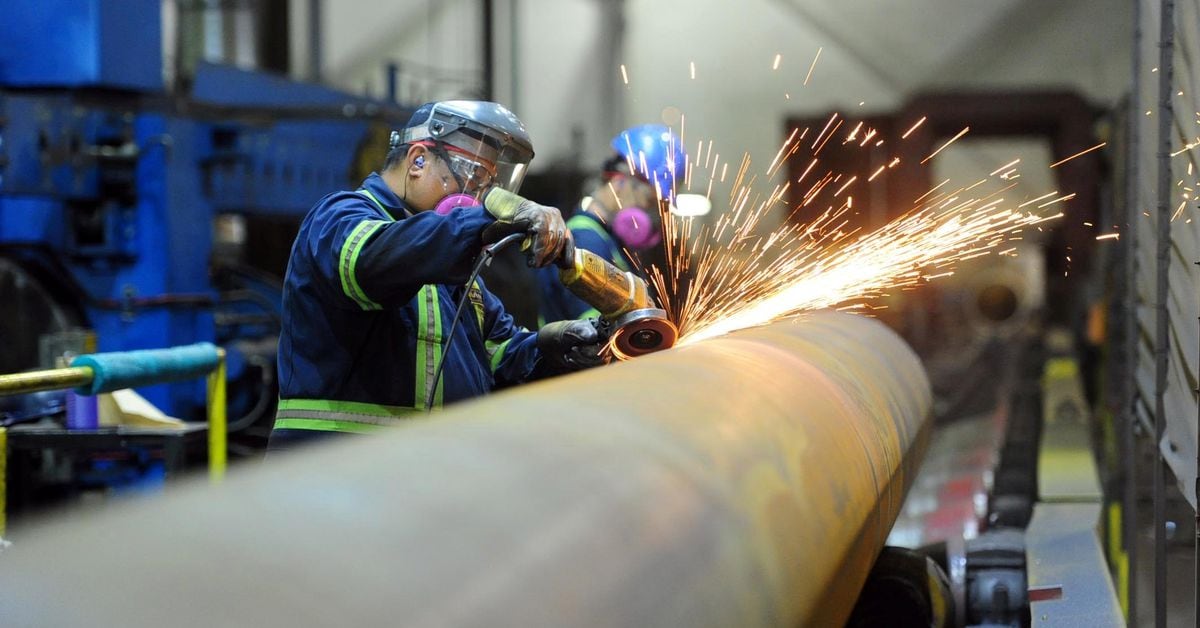The S&P Global Canada Manufacturing Purchasing Managers’ Index (PMI) fell to a seasonally adjusted 47.7 in November from 48.6 in October.
A reading below 50 indicates contraction in the sector. The PMI has been below that threshold since May, which is the longest such stretch since February 2016.
“Once again, the Canadian manufacturing PMI revealed some of the broad-based challenges facing the economy heading towards the end of the year,” Paul Smith, economics director at S&P Global Market Intelligence, said in a statement.
“Output and new orders remain mired in contraction territory, linked in part to a broader-based global industrial weakness which is limiting demand and sales. Destocking remains prevalent across the supply chain, and client budgets are stretched.”



I think they’re trying to figure out how to spin, “But it’s not our fault!”
Cause it sure as hell is … thinking consumer spending was the problem, when it really was companies price gouging the fuck out of us … which hasn’t stopped yet.
The problem is many fronted.
Free trade: When you are competing with lower cost of production regions, with dirt cheap shipping do to the way you can basically register a ship any where with a port - you have a competition problem. In other words: Free trade benefited those with money - and acted to displace manufacturing jobs. Thing is - there are far fewer designers that you need.
Money Printing as a Stop Gap to Dissuade dissidence against Long Shot Downs: Reality is the lockdown scenario that kept service possitions from being filled and used, could have been far shorter with a far harder lock down early on to allow time to implement precautions. This would have lead to 1-2 months of lowered economic activity, instead of say a year of it.
No solid organized plan to account for inflation: Had a policy of increasing minimum wage WITH inflation do to the printing of money been implemented, we would have actually been alright. Yes money would have been devalued, but the buying power of the average Canadian would have kept up with inflation avoiding the problems we are seeing.
Extended time of low interest rates: This leads to high debt ratio’s, which - if and when interest rates need to go up, tightens belts, and results in layoffs and so on. This in turn pinches the economy and can very easily kick off a spiral of lowered spending that degrades the economy with lower demand. The end result is a very difficult to control spiral downard that only starts several months OR LONGER after the offending change that is the trigger of it do to the lag time. What this means, is even if corrective action is taken - it’s too late.
Of course - admitting a recession, would mean admitting the government did not just fail in one spot, but in basically everything. And we all know how well modern day politicians accept blame.